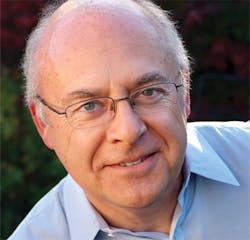
One of the fastest growing segments of the photonic components marketplace is currently high-brightness light-emitting diodes (LEDs) for lighting and illumination. Sales of these devices are expected to reach more than $7.3 billion by 2014, according to Strategies Unlimited (www.strategies-u.com). Although adoption of LEDs for home lighting has been slow, on the commercial front architectural lighting designers are excited about the ability of these sources to deliver colors and color-changing effects. But, while they do enable novel and impressive lighting displays, the advent of colored and color-changing sources has also placed new demands on the software used to design such displays, since much of this software originated before colored lighting was readily available (see cover and page 31).
Another photonic component with fast-growing sales is the quantum cascade laser (QCL). Rapid and continuing improvements in the device technology, ranging from higher efficiency to continuous-wave operation at room temperature, are making these lasers important sources in the mid-infrared (IR). Applications vary from molecular sensing and thermal imaging to antimissile countermeasures; and quantum cascade lasers are likely to gain further ground as advances continue–including, potentially, as new sources in the terahertz range (see page 45). And by the way, quantum cascade lasers will be featured at the Technology Forum to be held next January at the 2011 Lasers & Photonics Marketplace seminar; for more information visit www.marketplaceseminar.com.
Just as continuing innovation has driven adoption of QCLs for mid-IR applications, so it has advanced the use of ultrafast sources for multiphoton imaging. Biomedical researchers use multiphoton microscopy where the capability of imaging deeply, in vivo, and with higher sensitivity is of particular interest. Advances in femtosecond sources, especially the emergence of all-solid-state turnkey systems, has enabled end users to focus their efforts less on the laser source and more on their samples (see page 39).
About the Author
Stephen G. Anderson
Director, Industry Development - SPIE
Stephen Anderson is a photonics industry expert with an international background and has been actively involved with lasers and photonics for more than 30 years. As Director, Industry Development at SPIE – The international society for optics and photonics – he is responsible for tracking the photonics industry markets and technology to help define long-term strategy, while also facilitating development of SPIE’s industry activities. Before joining SPIE, Anderson was Associate Publisher and Editor in Chief of Laser Focus World and chaired the Lasers & Photonics Marketplace Seminar. Anderson also co-founded the BioOptics World brand. Anderson holds a chemistry degree from the University of York and an Executive MBA from Golden Gate University.